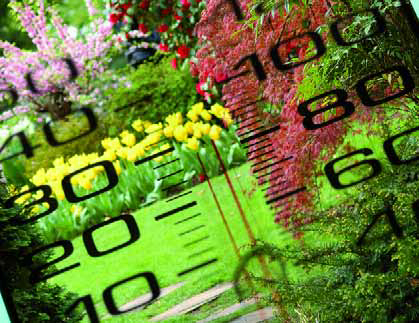management
In January 2008, southern California’s Orange County Water District unveiled its Groundwater Replenishment System, a treatment and reuse facility dedicated to producing water to resupply the county’s beleaguered groundwater reserves. A year later, Eric Herman toured the facility, getting a behind-the-scenes look at a thought-provoking system that is setting new standards for water treatment, management and use. While I was preparing our “True Green” issue for publication last summer, a friend invited me to tour the Groundwater Replenishment System, an advanced, 70-million-gallon-per-day water-purification facility located in Fountain Valley, Calif. The invitation to visit this joint project of the Orange County Water District and the Orange County Sanitation District came through
There’s something truly wonderful about working on properties that are in one way or another historic: In a very real sense, they give you a rare opportunity to participate in the past while at the same time you are conceiving and forming a place for the future. This project is a case in point: My endeavors here gave me the chance to beautify a truly splendid 1905 private home in southern Wisconsin and complement its amazing Palladian/Greek Revival-style bone structure with a contemporary composition in rock, plant material and water. The owner, who has a passion for architecture and historic preservation, had already completed a total restoration of the buildings. The grounds, however, still left much to be desired. The property manager had worked with me on a previous project, and he suggested that I should be brought in to revitalize the space – the centerpiece of which would turn out to be
One of the themes I’ve covered repeatedly through the years has had to do with the need for all of us to become effective team players. True, there have been times when egos have gotten in the way and I’ve found myself in fairly dysfunctional groups, but for all that, I have to say that collaboration very often yields great results. In fact, the vast majority of team projects in which I get involved these days are wonderful collaborations among clients, architects and general contractors as well as (depending on the project) interior designers, landscape architects, lighting designers and more. Of all those practitioners,
I’m always surprised when I run into clients or prospects who don’t appreciate or fully accept the fact that landscape-lighting systems require routine maintenance. These are people who easily recognize the need for upkeep when it comes to their swimming pools or landscapes, but this perception simply doesn’t extend to the lighting systems that frequently go along with them. I suspect this is so because dealing with lighting inside a home is so simple – basically just a matter of changing burned out bulbs as the need arises. Some also believe that landscape light bulbs should and will last forever, which is
It seems to be a trend: In more and more of the conversations I’ve been having with watershapers, the level of interest in what’s involved in working overseas has really spiked in recent weeks and months. I recall a time several years back when curiosity about overseas work focused on the glamour and excitement of stepping into uncharted territory. Now, however, there’s a certain urgency to the inquiries, and my guess is there are at least three reasons behind it. First, there’s the enduring sense of the prestige and energy that
As much as I love cold weather, I have to concede that we experienced way too much of a good thing this past winter. Long periods of extremely cold weather are the norm in many other parts of the country, and plants survive. Here, however, our local plants may be accustomed to surviving the isolated sub-freezing night, but sustained, frosty temperatures lasting nearly a week are something they weren't meant to handle. I'm sure you've seen the results of our cold snap in the news: Much of the state's citrus population - yes, coincidentally, the wonderful treats I wrote about in last month's column - has sustained long-term damage and the trees in many cases will take two years and more to recover. And that doesn't just affect us here: The rippling effects will be felt in
As much as I love cold weather, I have to concede that we experienced way too much of a good thing this past winter. Long periods of extremely cold weather are the norm in many other parts of the country, and plants survive. Here, however, our local plants may be accustomed to surviving the isolated sub-freezing night, but sustained, frosty temperatures lasting nearly a week are something they weren't meant to handle. I'm sure you've seen the results of our cold snap in the news: Much of the state's citrus population - yes, coincidentally, the wonderful treats I wrote about in last month's column - has sustained long-term damage and the trees in many cases will take two years and more to recover. And that doesn't just affect us here: The rippling effects will be felt in
Beautiful gardens make us happy. When we walk through or by them on the way to our daily activities; when we happen upon them while driving from one place to another; when we deliberately make them our destination - whatever the circumstances, beautiful gardens bring smiles to our faces and a sense of balance and serenity to




















